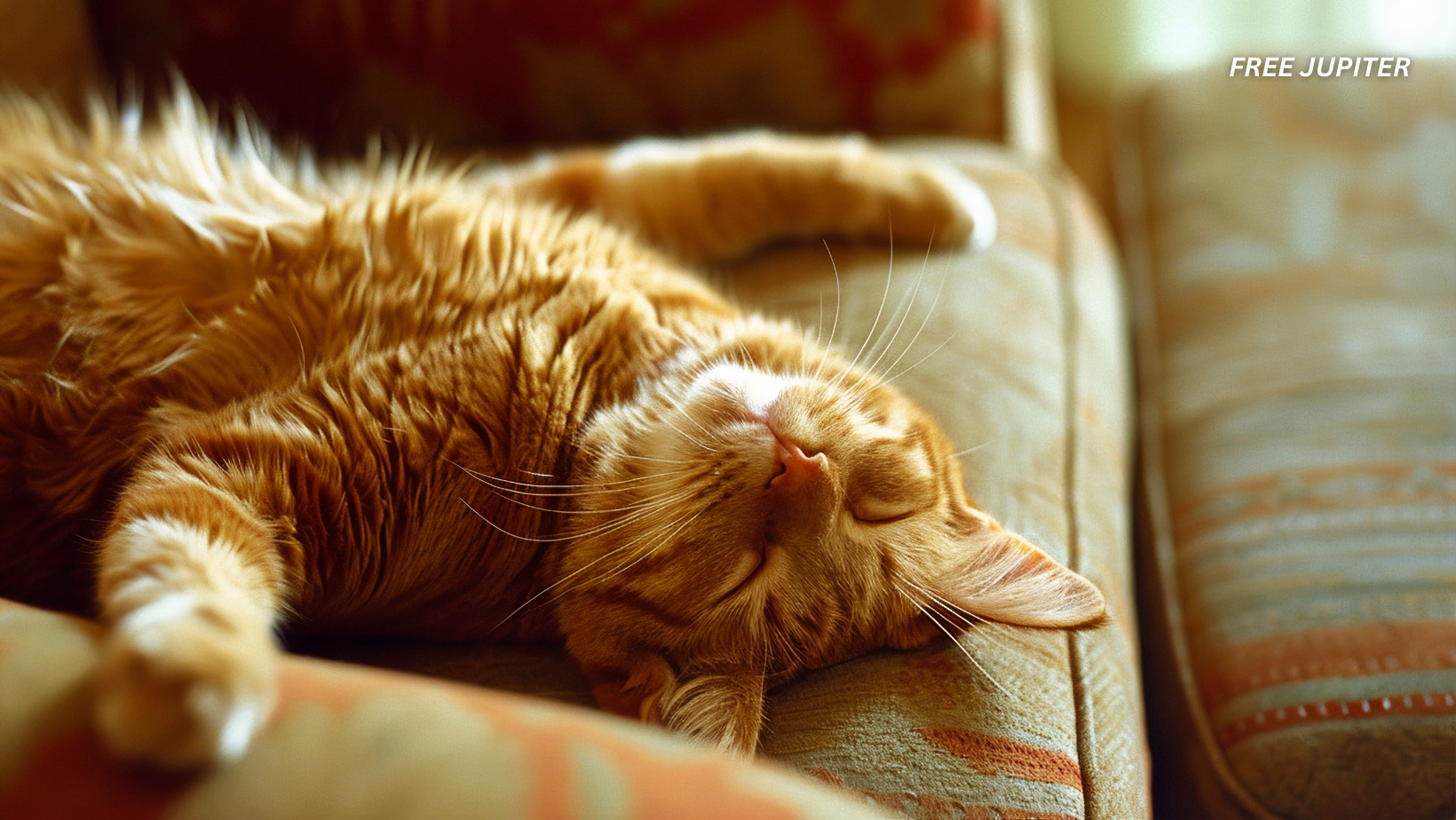Friendly Note: FreeJupiter.com shares general info for curious minds 🌟 Please fact-check all claims—and always check health matters with a professional 💙
Cats have long fascinated humans with their enigmatic behaviors, not least their soothing purrs. But have you ever wondered why some cats seem to purr more frequently or more intensely than others? Recent scientific research from Kyoto University in Japan has provided compelling evidence that the answer lies deep within their DNA, specifically in a gene linked to mixed-breed cats. This discovery not only unravels part of the mystery behind feline purring but also offers fresh insights into how cats communicate with us and with each other.
The Science of Purring: More Than Just a Soothing Sound
Purring is one of the most recognizable and endearing sounds cats make. It is often associated with contentment, but cats also purr in a variety of situations, including when they are anxious, in pain, or even healing. The mechanism behind purring is quite fascinating: it involves the rapid, rhythmic contraction and relaxation of muscles within the vocal folds of the larynx. These muscle movements cause the vocal cords to vibrate, producing the characteristic purring sound.
What makes purring particularly interesting is the neurological control required to maintain this steady vibration. The brain sends constant signals through nerves to regulate these muscle contractions, making purring an active and controlled behavior rather than a passive reflex. This complexity hints at the importance of purring in feline communication and social interaction.
Early Life Communication: The Role of Purring in Kittens
Kittens are born blind and deaf, making their initial communication with their mother and littermates reliant on non-visual and non-auditory cues. Purring vibrations serve as a vital signal during this early stage, helping kittens stay connected with their mother and siblings. The vibrations can convey comfort and safety, guiding the mother cat to attend to her young.
This early use of purring suggests that the behavior evolved as a crucial survival tool. It is a form of communication that transcends simple vocalization, engaging tactile and auditory senses simultaneously. Scientists believe this early communication function laid the groundwork for the broader role purring plays in adult cats.
The Study: Linking Genetics to Purring Behavior
The groundbreaking study conducted by researchers at Kyoto University involved 280 mixed-breed cats, all neutered or spayed, living in their owners’ homes across Japan. The researchers sought to understand whether genetic differences could explain variations in how often cats purr and vocalize.
They focused on the androgen receptor gene, known to influence behavior and social traits in many animals. This gene exists in different forms, or alleles, which can affect how the gene functions. The study compared the presence of a short-type and a long-type version of this gene in domestic cats and related wild feline species.
DNA samples were collected non-invasively from the cats, and owners provided detailed behavioral assessments, particularly focusing on how frequently their cats purred and vocalized.
Key Findings: The Genetic Influence on Purring and Vocalization
The results were striking. Cats carrying the short-type androgen receptor gene were reported by their owners to purr more frequently than those with the long-type gene. This suggests a strong genetic component to the tendency to purr, linking this behavior directly to specific gene variants.
Moreover, male cats with the short-type gene were more vocal towards their human companions, indicating that this gene variant might enhance the cat’s inclination to communicate vocally. Female cats with the same gene variant, however, showed more aggression towards strangers, highlighting an intriguing gender-based difference in how this gene influences behavior.
Mixed-Breed Cats vs. Purebreds: Behavioral and Genetic Differences
One of the most fascinating aspects of the study was the contrast between mixed-breed cats and purebred cats. Mixed-breed cats, often rescued or adopted from shelters, tended to meow and purr more than purebred cats. This vocal tendency aligns with the genetic findings: mixed-breed cats are more likely to carry the short-type androgen receptor gene, while purebreds more commonly possess the long-type gene.
This difference may reflect the impact of domestication and selective breeding. Purebred cats, bred for specific physical traits and sometimes for temperament, may have been selected for less vocal behavior, possibly because frequent vocalization is less desirable in certain breeds or indoor environments.
Evolutionary Context: Comparing Domestic Cats to Wild Relatives
To better understand the origins of these gene variants, researchers compared domestic cats with closely related wild species, such as the leopard cat and fishing cat. Interestingly, these wild species only possess the short-type androgen receptor gene variant, which is associated with more frequent purring and vocalization.
Domestic cats, on the other hand, have developed longer versions of this gene, which do not appear in their wild cousins. This suggests that the longer gene variants emerged through the process of domestication and selective breeding, likely influencing behavioral traits favored by humans over thousands of years.
Why Does This Matter? Implications for Cat Care and Welfare
Understanding the genetic basis of purring and vocal communication in cats has practical implications. By recognizing that genetics influence how vocal or purry a cat might be, owners and veterinarians can better interpret feline behavior and tailor care accordingly.
For example, a cat that purrs or meows frequently may have a genetic predisposition for such behavior rather than a sign of distress or illness. Conversely, a quiet cat might not necessarily be less affectionate but could simply have a different genetic makeup.
Moreover, this knowledge can improve animal welfare by helping caretakers anticipate behavioral tendencies, reduce stress, and create environments that suit individual cats’ communication styles.
The Broader Impact: Enhancing Human-Cat Relationships
Cats are beloved companions worldwide, and their ability to communicate with humans is a key part of the bond we share. This research enriches our understanding of how genetics shape that communication, offering a window into the unique personalities of our feline friends.
Yume Okamoto, the study’s lead author, reflected on the significance of the findings:
“The enthusiastic response from cat owners across Japan showed us how much people care about understanding their pets. Our hope is that this research will help build stronger, happier relationships between cats and their humans by deepening our knowledge of what makes each cat unique.”
Future Directions: What’s Next in Feline Genetics?
While this study has made significant strides in decoding the genetic factors behind purring and vocalization, many questions remain. Future research could explore how these gene variants interact with environmental factors, such as upbringing and socialization, to shape behavior.
Additionally, expanding studies to include a wider variety of breeds and geographic populations could reveal further nuances in how genetics influence feline communication.
Understanding the genetic basis of other behaviors, such as playfulness, aggression, or anxiety, could also provide a more comprehensive picture of cat personalities, ultimately benefiting both cats and their human families.
Read more: You Can Now Adopt Puppies That Were ‘Too Friendly’ To Become Police Dogs
Conclusion: The Melody of Genes and Purrs
Cats’ purrs are more than just charming background noise; they are a complex form of communication deeply rooted in genetics. The discovery that a specific gene variant influences how much cats purr and vocalize opens new doors to understanding these beloved animals.
As science continues to explore the genetic symphony behind feline behavior, we gain not only fascinating insights but also practical tools to nurture the special connection between cats and their human companions. Whether your cat is a vocal chatterbox or a quiet purrer, now we know that their unique voice is written in their DNA—a beautiful reminder of the intricate bond we share with these mysterious creatures.










